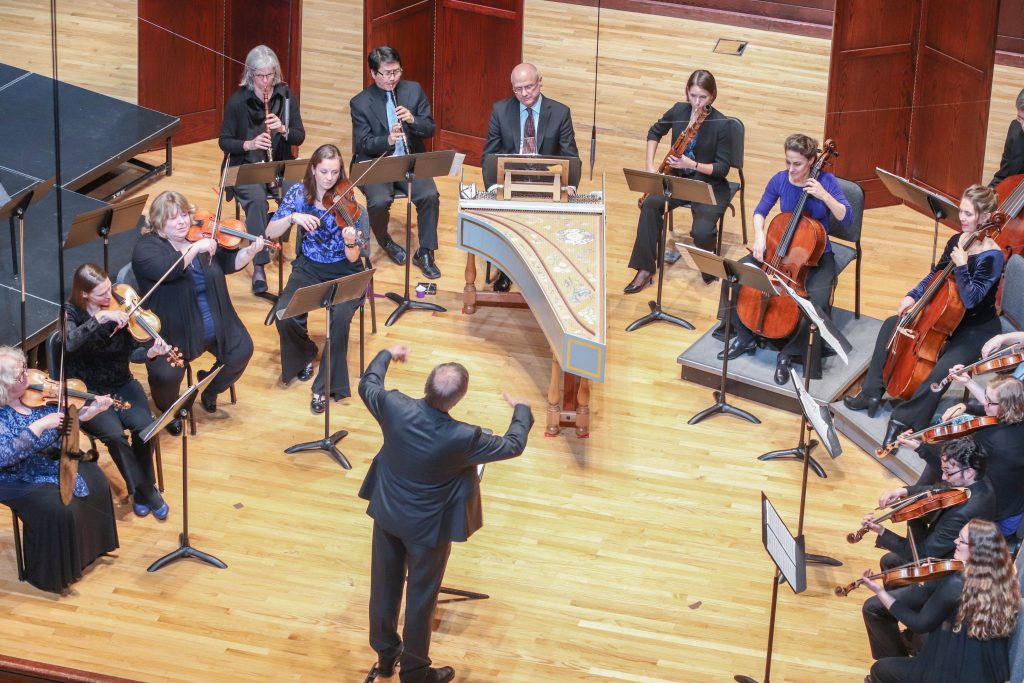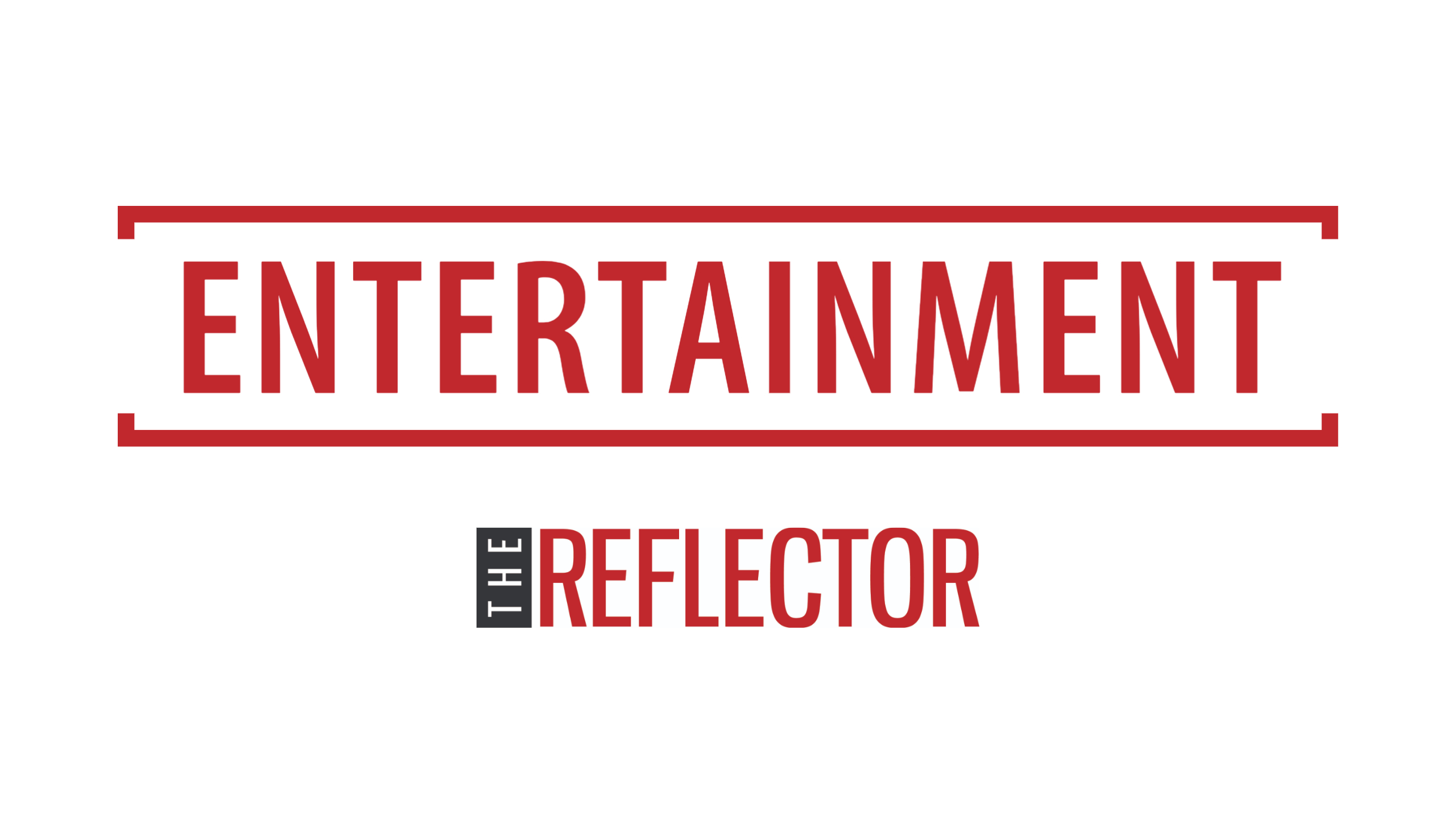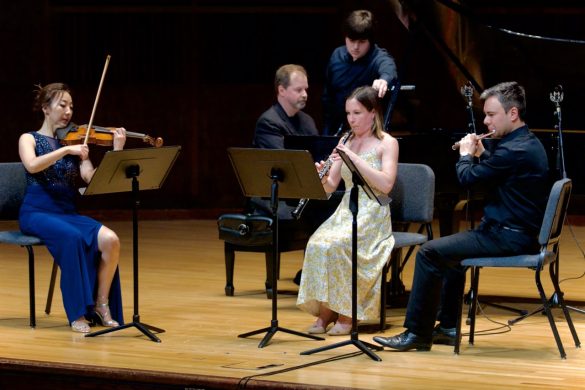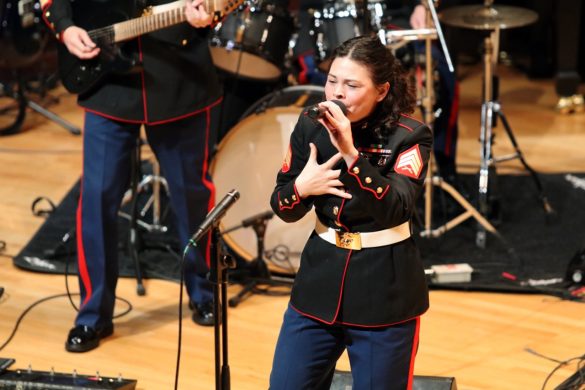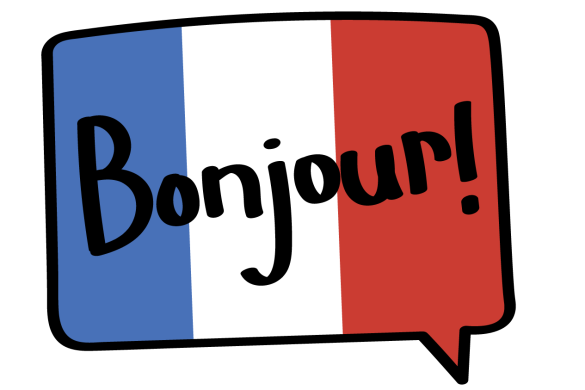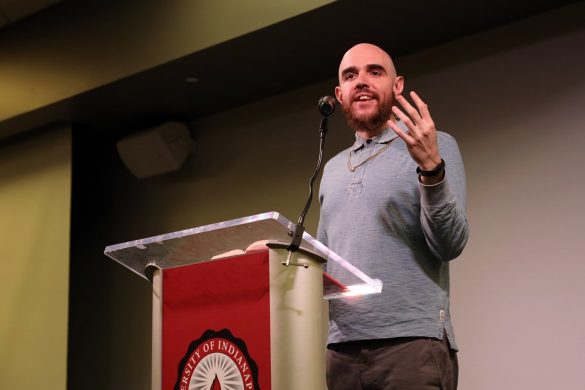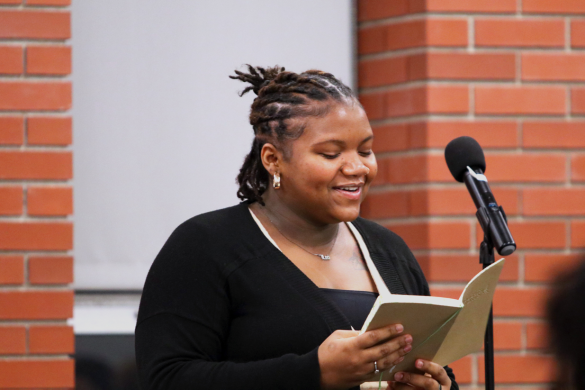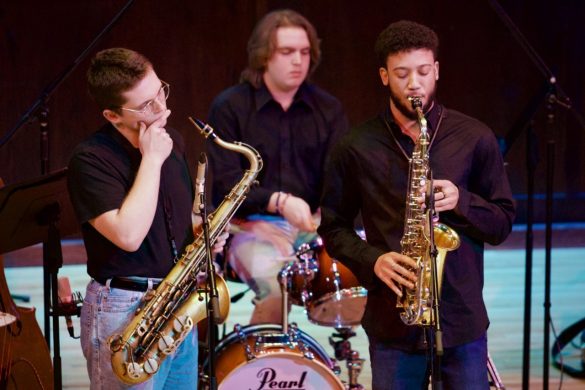The Indianapolis Baroque Orchestra returned to the University of Indianapolis to perform “The Colorful Telemann” on Feb. 11, conducted by Barthold Kuijken in Ruth Lilly Performance Hall. Indy Baroque performed live as well as to record their fourth CD. They have a long standing partnership with UIndy—the orchestra first performed in Ruth Lilly Performance Hall in 1999, making this year the 20th anniversary of that performance.
According to Indy Baroque Concert Master and violinist Allison Nyquist, Indy Baroque was first brought to UIndy by retired professor Tom Gerber. Nyquist said they felt welcomed into the community and privileged to play in such an acoustically elegant performance hall.
“Ruth Lilly Performance Hall has always been the perfect size,” Nyquist said. “It makes the instruments honest, so we have to pay a lot of attention to detail as the hall truly reflects what sounds our instruments make for our audience…UIndy is really our home base.”
Indy Baroque conductor Barthold Kuijken is an eminent leader in the field of the early music era. Kuijken performed and recorded the repertoire for the Baroque flute and has also collaborated with many other early music specialists.
Conductor Barthold Kuijken leads the Indianapolis Baroque Orchestra during a performance of “The Colorful Telemann.” The orchestra first played at the university in 1999, two decades prior to their Feb. 11 performance.
Freshman music performance major Dominic Duray said he was excited to be in the presence of one of the pioneering musicians in Baroque orchestra.
“The people that UIndy brings in to perform are always incredible talents… It reminds me that UIndy is truly something great and something I am proud to be a part of,” Duray said.“There are not many other places that bring in the kind of talent and the variety of talent that UIndy does when it comes to music… I try to come to as many concerts possible to enjoy the music and to help me improve my own skill and technique.”
“The Colorful Telemann” follows traditional French Baroque style and structure as it included an overture in C minor, a sonata in E minor, concerto in G, sinfonia melodica in C, as well as a concerto à 4 in D to conclude. Indy Baroque’s performance has various instruments including: violin, viola, cello, violone, harpsichord, oboe, flute and bassoon.
According to Kuijken, these instruments accompanying this style makes for an intimate performance that has an honest connection to tradition and audience.
Kuijken described the concert as a window into Telemann’s life.
“We guide the audience on a musical journey with Telemann as he chats with a friend, stops to watch a beautiful landscape, listens to a bird or to some fiddlers in a tavern, admires a tree or a flower, and thoroughly enjoys his day, ” said Kuijken.
Indy Baroque gives to its audience what violinist, Philip Spray, would describe as “human-size” music that is played to the individual instead of simply trying to fill an entire music hall.
“The gift that we hope to give our audience is that they come out refreshed,” Spray said. “Lifting someone’s spirits after a rough day, offering an escape from the troublesome moments of life, or just the simple act of putting a smile on someone’s face is all we hope to do… Sometimes I pick a specific audience member and just play to them.”
According to Nyquist, the experience of attending an orchestral event, but especially a baroque orchestra, is an intimate experience between the audience and the performers.
“Baroque music is intellectually stimulating and holds value through the ages,” Nyquist said. “Give it a try, you might find yourself to be pleasantly surprised.”
The Indy Baroque will be traveling to New York City to showcase their musical talent in the coming months, performing in New York venues on March 21. In April, the group will return to Indiana to perform at Rose-Hulman Institute on April 26 at 7:30 p.m., as well as the Indiana History Center on May 19 at 4 p.m.
